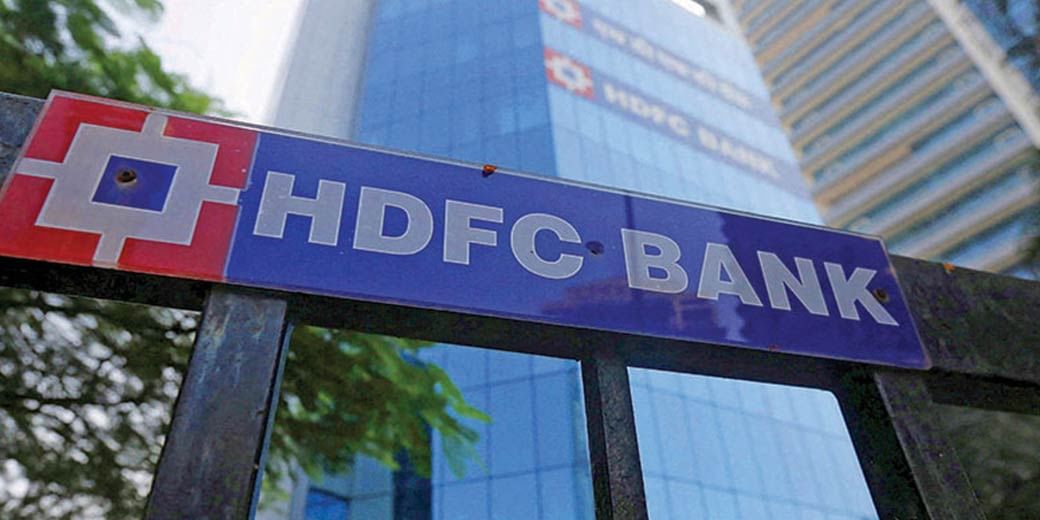What's ailing HDFC Bank's interest margin?
While the bank's profit exceeded market expectations, the Net Interest Income (NII), representing the pure interest income figures, disappointed

The results for HDFC Bank’s third quarter were mixed. While the bank’s profit exceeded market expectations, the Net Interest Income (NII), representing the pure interest income figures, disappointed. Net Interest Income is the difference between the interest earned on loans and the interest paid on deposits.
The bank’s profit stood at ₹16,327.5 crore, surpassing the market estimate of ₹15,693 crores. However, the Net Interest Income was ₹28,471.3 crores, slightly below the market expectation of ₹29,000 crores.
Despite the boost in overall profits, there is concern about the increase in provision coverage ratio (PCR). The bank’s PCR has reached 75%, primarily due to a higher-than-expected rise in slippages, which are the additions to non-performing assets (NPAs). In the third quarter, slippages amounted to ₹7,000 crores, exceeding the market estimate of ₹6,300-6,500 crores.
Additionally, after consistently maintaining a Net Interest Margin (NIM) of 4% or higher for an extended period, the bank’s margin slipped to 3.5% in the third quarter. This decline in NIM raises concerns as it indicates a potential end to the era of outperforming other banks in this aspect.
First, let’s understand what NIM is, and then we’ll comprehend the reasons behind a decline in NIM.
NIM, or Net Interest Margin, can be explained in simple terms. It is the difference between the interest earned on loans and the interest paid on deposits by any bank or Non-Banking Financial Company (NBFC). To calculate it, you subtract the interest expenses (or payments made on deposits) from the total interest income of the bank. The resulting figure is then divided by the income-generating assets or loans.
Now, let’s look at the reason behind fall in NIM. The reason is the merger with the parent company HDFC Limited. A year ago, only 8% of the total liabilities of the bank were high-cost borrowings which has now increased to 21% after this merger. This is because HDFC Limited, unlike the bank, could not garner money from savings or current accounts. To raise funds, HDFC Limited had to use instruments such as bonds, NCDs, etc. This was the reason why the company’s margins remained in the range of 2-2.5%.
But the big question is did the market not already know about the pressure coming from the merger or the margins resulting from it? If yes, then why did the share price drop so sharply after the results?
During the last quarter’s results, the management of the bank expressed hope for improvement in NIM in the coming times. This led the market to believe that the impact of the merger was almost over and now there would be a gradual improvement in margins. However, when the margins of this quarter remained stable even when RBI relaxed rules for banks it disappointed the market quite a bit.
Another major reason for disappointment is the growth of deposits. It is crucial for banks to have deposits to lend loans. If the growth of deposits is slow, it can have an impact on lending. This can be estimated from the Loan-to-Deposit Ratio (LDR), which has increased to 110%.
HDFC Bank’s Loan-to-Deposit Ratio (LDR) is the highest among private banks. Before the merger, it was at 85-89%, and RBI considers an LDR ratio of 70-75% comfortable for banks. This could increase the pressure on the bank to obtain deposits at higher rates because the bank’s deposit growth was only 1.9% this quarter, which is below 2%.
For a balanced loan and deposit growth, deposit growth should ideally be 3-4% more than loan growth. However, this is not currently happening, leading to potential funding stress. This concern was not highlighted in the CEO’s statement in October 2023, and that’s why there is a rapid decline in the share price.
Now, the significant question is whether the growth story of HDFC Bank has come to an end. Has the bank lost its mojo?
Stating this would be premature because from FY15 until now, HDFC Bank has increased its share of loans and deposits in the industry from around 5% to more than 10%. This has propelled the bank to its current position. In the last five years, the bank’s branches have seen a growth of 60%, a pace unmatched by other banks. Banks across India are expanding their branches at twice the speed, demonstrating the bank’s readiness to manage its deposit growth challenge.
So, what do brokers say after the results? Have they changed their stance? Have there been any revisions in ratings or targets for this bank?
After the results, some brokers have indeed made cuts to their ratings and targets. However, currently, no broker is recommending selling the stock. KR Choksey has maintained a Buy rating but reduced the target from ₹2060 to ₹1950. Meanwhile, Nuvama has downgraded its rating to Hold and set a target of ₹1730, down from the previous ₹1770.
After a prolonged period of overall growth, HDFC Bank is facing some challenges, and it might take some time to overcome them. The stock could enter a consolidation phase during this period.
In such a scenario, investors with a short-term perspective may consider staying away from the stock. However, for long-term investors who dare to hold through uncertainties, this could be an excellent opportunity to buy the stock at a dip.

